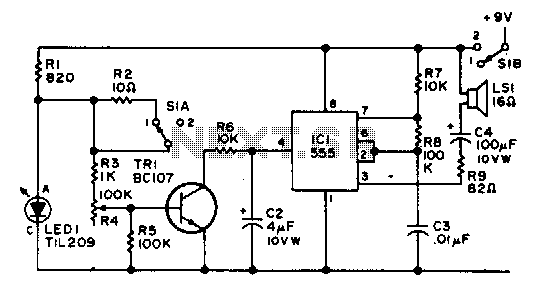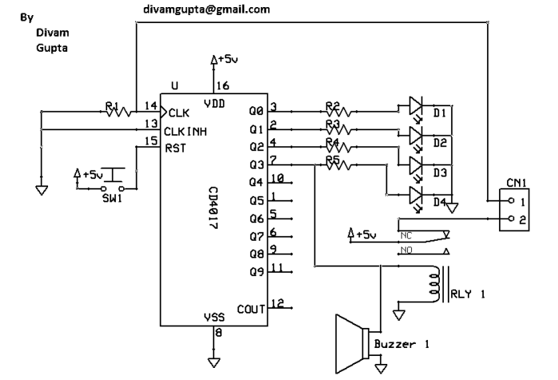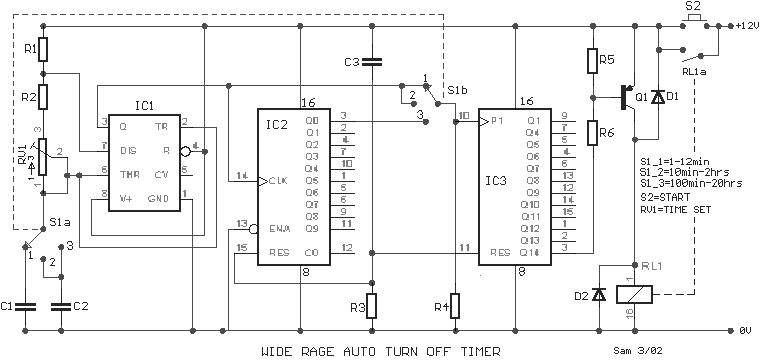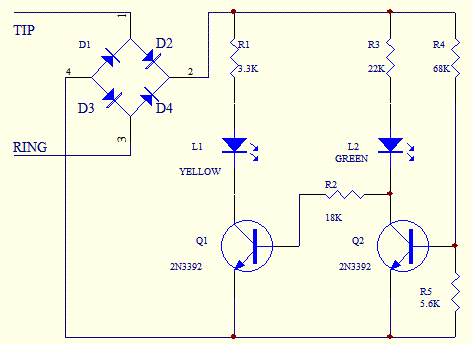
Electronic egg timer

The integrated circuit (IC) operates as an astable multivibrator that is controlled by an external transistor. S1A/B serves as the on-off toggle switch.
The astable multivibrator configuration is commonly utilized in various applications, including pulse generation, clock signals, and LED flashing circuits. In this design, the IC continuously oscillates between its high and low states without requiring any stable state, effectively creating a square wave output.
The external transistor plays a crucial role in controlling the frequency and duty cycle of the multivibrator. By adjusting the base current of the transistor, the timing of the output waveform can be modified. The configuration typically involves resistors and capacitors connected to the IC, which set the time periods for the high and low states of the output signal.
The toggle switch S1A/B allows the user to easily turn the circuit on or off, providing a straightforward interface for controlling the multivibrator's operation. When the switch is in the 'on' position, the circuit is activated, enabling the oscillation of the output signal. Conversely, when the switch is in the 'off' position, the circuit ceases to operate, stopping the oscillation.
Overall, this astable multivibrator circuit is an effective solution for generating periodic signals and can be adapted for various electronic applications by modifying the component values to achieve the desired frequency and output characteristics.The IC functions as an af multivibrator which is controlled by the external transistor S1A/B is the on-off toggle switch.
The astable multivibrator configuration is commonly utilized in various applications, including pulse generation, clock signals, and LED flashing circuits. In this design, the IC continuously oscillates between its high and low states without requiring any stable state, effectively creating a square wave output.
The external transistor plays a crucial role in controlling the frequency and duty cycle of the multivibrator. By adjusting the base current of the transistor, the timing of the output waveform can be modified. The configuration typically involves resistors and capacitors connected to the IC, which set the time periods for the high and low states of the output signal.
The toggle switch S1A/B allows the user to easily turn the circuit on or off, providing a straightforward interface for controlling the multivibrator's operation. When the switch is in the 'on' position, the circuit is activated, enabling the oscillation of the output signal. Conversely, when the switch is in the 'off' position, the circuit ceases to operate, stopping the oscillation.
Overall, this astable multivibrator circuit is an effective solution for generating periodic signals and can be adapted for various electronic applications by modifying the component values to achieve the desired frequency and output characteristics.The IC functions as an af multivibrator which is controlled by the external transistor S1A/B is the on-off toggle switch.





